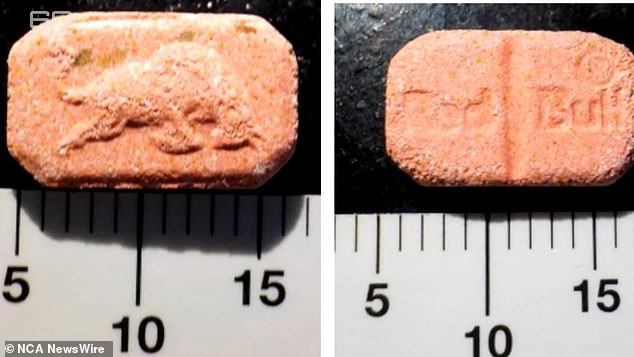Nitazene opioid : Australian Federal Police issue dire new warning about deadly new drug hitting Australia’s streets
Police at the highest levels are cracking down on lethal drugs cut with the synthetic opioid Nitazene, which has claimed at least 20 lives in Australia.
Nitazenes are a group of synthetic opioids consisting of several types of drugs, including protonitazene and metonitazene.
The drug is often mixed with other substances, such as MDMA, ketamine, cocaine and methamphetamine. People who use it often do not know that they are at risk.
Australian Federal Police Commander Paula Hudson urged everyone to be aware of the dangers of using Nitazenes, which is 1,000 times stronger than morphine.
“The authorities are very concerned about the Nitazenes and we want to let the community know that what they are taking may not be what they think it is,” Ms. Hudson told 60 Minutes on Sunday.
“Nitazene is on the streets right now, so be very careful. Know the signs of an overdose and be prepared.”
The chilling warning comes as Victoria Police continue their investigation into the deaths of four people in Broadmeadows, Melbourne, last month.
Australian Federal Police Commander Paula Hudson (pictured) urged everyone to be aware of the dangers of consuming Nitazenes

Authorities have raised concerns that the deadly opioid Nitazene could appear on Australian streets. Photo: Supplied/Australian Federal Police
The bodies of Michael Hodgkinson, 32, Abdul El Sayed, 17, were found along with a 37-year-old man and a 42-year-old woman, suspected of having suffered a drug overdose.
The deaths are still considered non-suspicious at this time.
Victoria Police said preliminary tests showed all four people had a synthetic opioid in their systems.
However, police confirmed that no fentanyl was found during initial tests.
With 20 deaths and dozens of overdoses reported in Australia, health authorities and experts are now on extra alert for Nitazene.
Uniting Medically Supervised Injecting Centre medical director Dr Marianne Jauncey told the Herald Sun she was concerned the synthetic opioid found in the Broadmeadows deaths was a type of Nitazene.
According to Dr Jauncey, it is vital that drug testing services become more accessible.
“I find it scary that we don’t know where to look now,” she said.
‘Right now we won’t know until people continue to overdose or die.
‘Without things like drug tests, it’s hard to know what’s going on.
“If you don’t look, you won’t find it. We need to look more. We need to increase our surveillance.”

Medical Director of Uniting Medically Supervised Injecting Centre, Dr Marianne Jauncey (pictured), wants drug testing services to be more accessible

Nitazenes are becoming a growing problem in Australia
Ms Hudson said the increase in Nitazenes in the community was not surprising after the AFP intercepted 37 parcels containing the synthetic opioid in the post last year.
She said four kilos were found during a search of her home in Melbourne last week.
“That is a great concern to us,” said Hudson.
‘The public needs to be aware that two milligrams can be fatal.
“So even if we seize 30 grams, that’s enough for 25,000 lethal doses.”
However, experts believe that Nitazenes is produced in China, where production of the drug was previously legal.
The Chinese government has since taken stricter measures against the production of the drug.

Police were called to Broadmeadows in June after four bodies were found from suspected overdoses.
“The Chinese authorities can effectively enforce the regulation of Nitazenes because it is now on the list of controlled substances,” Commissioner Hudson said.
‘That certainly gives us much more leverage at sea, so we can prevent Nitazenes from flowing into Australia.’
Meanwhile, Victoria’s Department of Health last week issued a warning about the synthetic opioid Protonitazene.
“There have recently been serious accidents in Melbourne involving a white powder sold as cocaine that contained protonatazene,” the warning said.
‘The product appears to cause serious side effects, such as unconsciousness, respiratory depression and life-threatening hypoxia (insufficient oxygen for normal functioning).’
